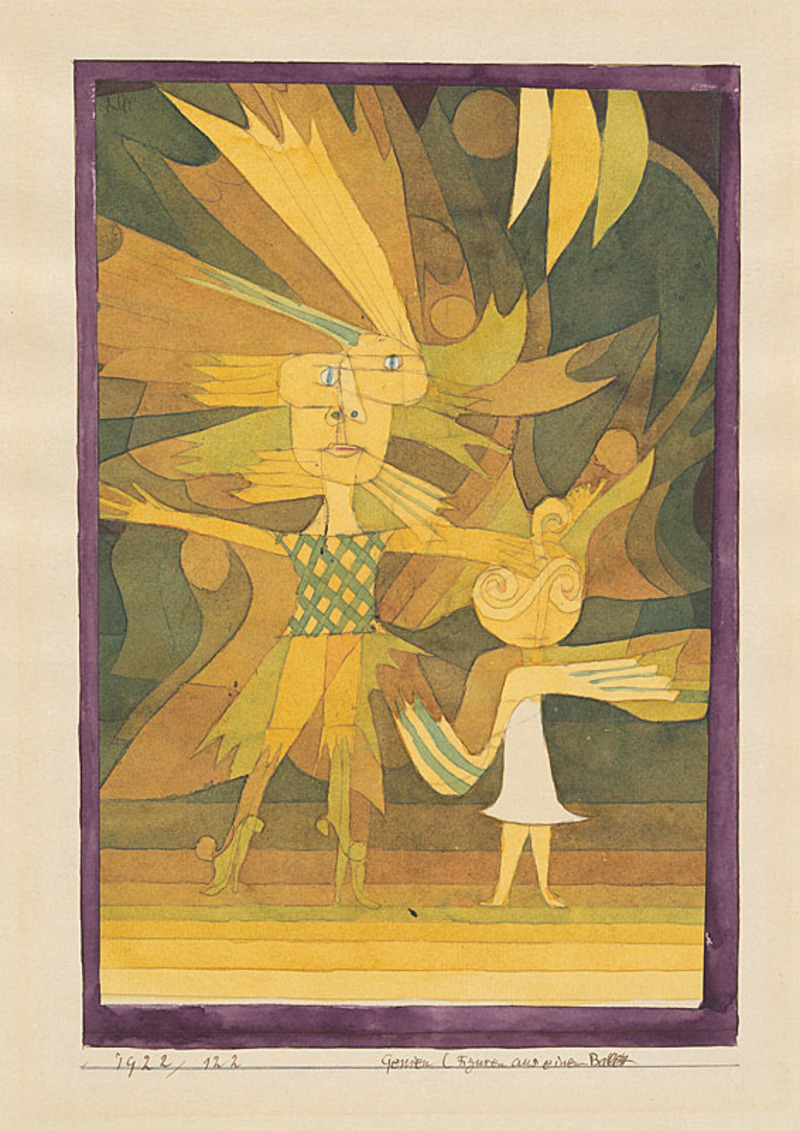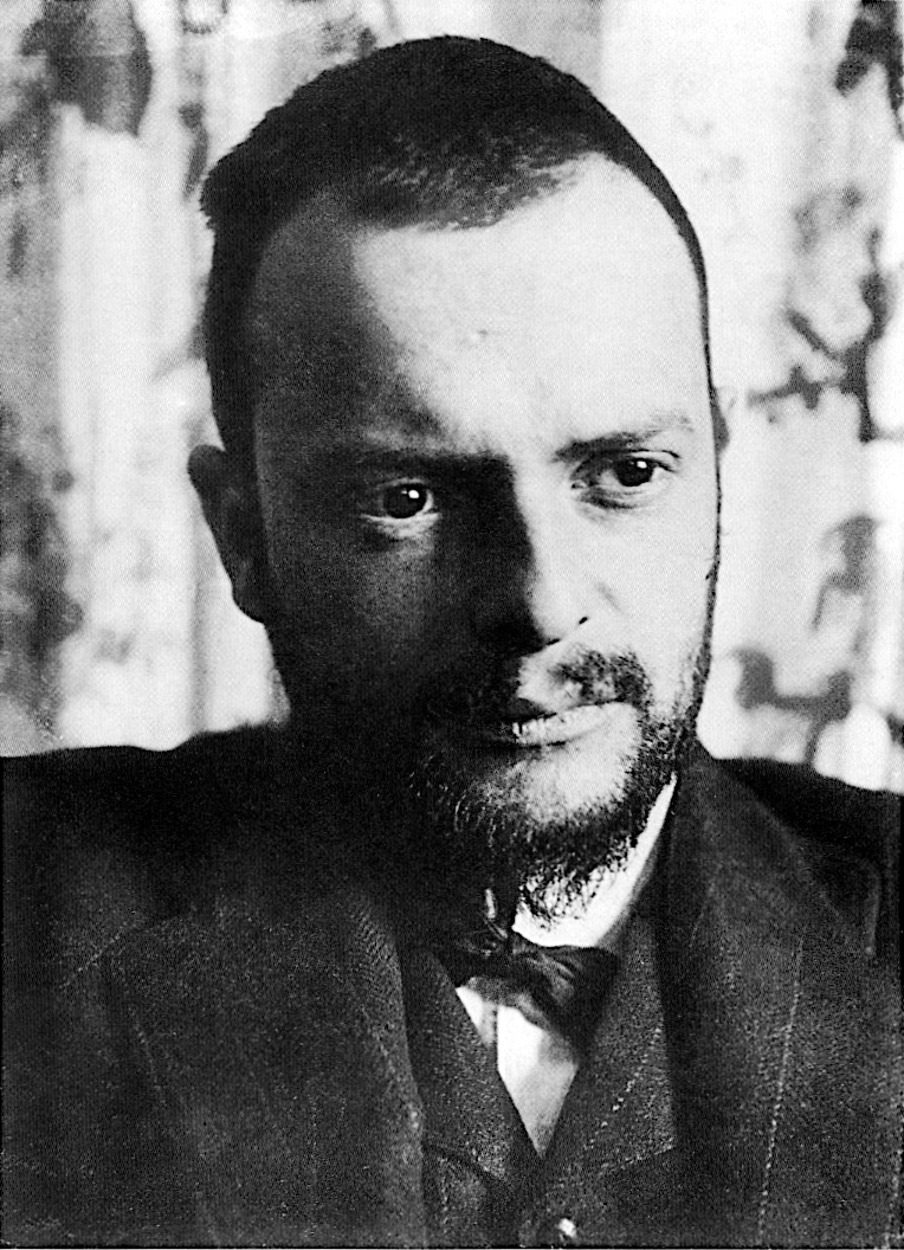We show today's piece thanks to the courtesy of Zentrum Paul Klee, where "Genii" (plural of “genius”) is on display in the current exhibition "Paul Klee: Images in motion". I wish I could see it live in Bern – enjoy!
Genius, the root of the word "Genii" as used by Paul Klee in the title of this work, refers to protector spirits in ancient Roman religion. In every human– and only in humans– there dwells a genius, which dies when the person dies. The genius represents the personality and the capacity for procreation. This also gives rise to today’s use of the word "genius," which refers to the creative force and the source of inspiration of a particularly gifted person. The two figures in the watercolour Genii (Figures from a Ballet), painted in 1922, are easily recognized as two female dancers. The posture of the legs and the outstretched arms, which look almost like wings, leave no doubt about it. The figures are magically composed: the larger one has radiant blue eyes, a charming torso, and nimble little shoes; the smaller wears a white skirt, and her face is shaped almost like a treble clef. But Klee doesn’t merely depict two dancers in motion. He uses all the other means at his disposal, such as line, form, and colour, to accentuate the dynamism of the scene. The outline shapes of the two figures are repeated like an echo, as if different moments of a movement are being captured. The shading of the foreground becomes darker as it approaches the edge of the picture. At the bottom of the piece, however, the color moves from dark at the top to nearly white at the bottom. This recreates the feel of a stage performance in which the dancers are brightly lit and the background remains in darkness.


 Paul Klee
Paul Klee